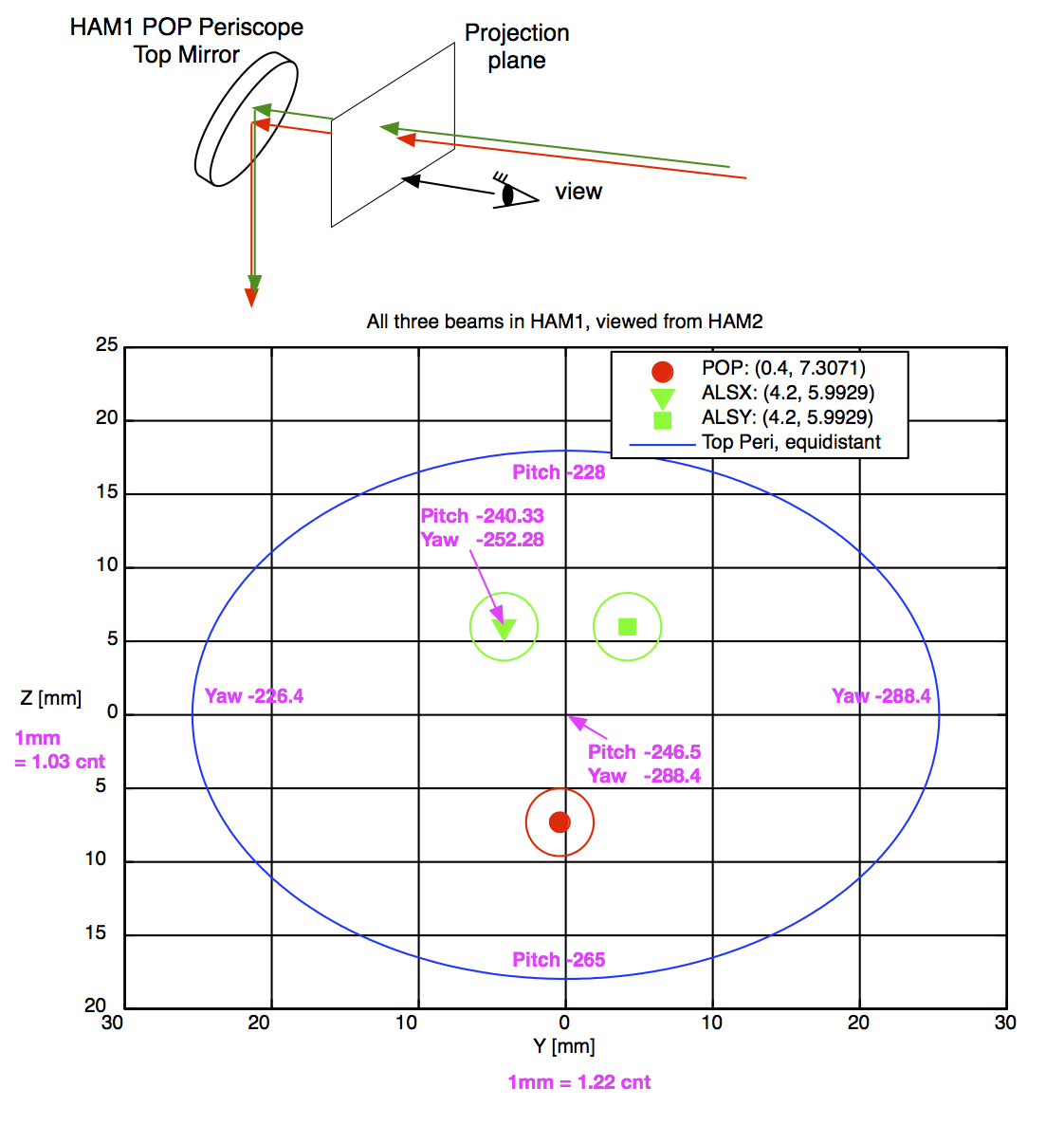[Alexa, Koji, Kiwamu]
We finally completed the in-vac work in HAM1 and the Apollo crews put the door back on. All the necessary beam comes out to ISCT1 and all the necessary beam hit the in-vac diodes. Yeah!
Some pictures will be uploaded in ResouceSpace later.
Here are a list of what we did today:
- TMSX was aligned to make sure that the green light hits the center ITMX (reported in alog 9203).
- Sheila aligned PR3 to get the green light on the iris on ISCT1 (reported in alog 9191).
-
We placed the beam dump in the position where the beam should be.
- This is the one we could not align yesterday (see alog 9196).
-
We checked the spot position of every optic in the ALS path with the green light.
- They looked good.
- Therefore we didn't touch the alignment of these mirrors.
-
We checked the spot position of every optic in the POP path with the infrared POP beam and with an IR viewer.
- They looked good.
- The beam still landed on the center of the bottom periscope on ISCT1.
- Therefore we did't touch the alignment of these mirrors either.
-
We opened the shutter of the PSL/ALS light pipe to check the alignment of this path.
- It was a bit too high and therefore we steered the top periscope mirror of the PSL to lower it.
- The horizontal alignment was good from the beginning.
-
We moved onto the REFL path.
- The REFL beam coming out from HAM2 toward HAM1 seemed a bit too low by probably 5 mm.
- The horizontal alignment looked very good.
- Even so, the beam on RM1 and RM2 and their downstream looked well centered. So we didn't change anything.
- The beam was already on all three diodes from the beginning.
-
The tip-tilts were found to be not damped.
- There was no damping signals flowing through the model. I am not sure why we lost the last good settings for them.
- Koji and Jeff Kissel worked on this and finally made them damped.
-
We centered the beam on the REFL LSC diode by steering the steering mirror (which is, technically speaking, a BS) in front of the diode.
- This was done by looking at the digitized DC signal.
- Also we moved the black glass beam dump, which is supposed to catch the reflection off of the REFL LSC diode, by an inch or to the west because the beam had been on the edge of the black glass.
-
We found that the reflected light off of the WFSs were hitting their steering mirror and not making to the black glass beam dump.
- Note that WFS_A, which is the PSL side of the WFSs, didn't have a black glass beam dump. Therefore we asked Corey to give us a dump and we newly installed it.
- We introduced some more rotation in the angle of the WFS detectors to get the reflected light spatially separated from the incident.
- We took several pictures before and after changing WFSs' orientations.
- Then we fine-adjusted the location of the black glass beam dumps to catch the reflections.
-
We centered the beam on each WFS by steering the picomotorized mirrors on the sled.
- This was done by looking at the digitized WFS_DC signals.
- Also we had to switch the WFS interface D-subs with the ones of the analog WFSs to get the signal available.





Pictures are now available in ResourceSpace:
Notes on the WFS locations:
As reported in the previous alog, we have touched the location of both WFS_A and WFS_B because they needed to be rotated more to have a spatially well separated reflection. Before and after applying this modification, we took several pictures to estimate how much the WFSs were shifted along the beam propagation axis since this can affect our WFS signal extraction.
For some more details, see the attached pictures.